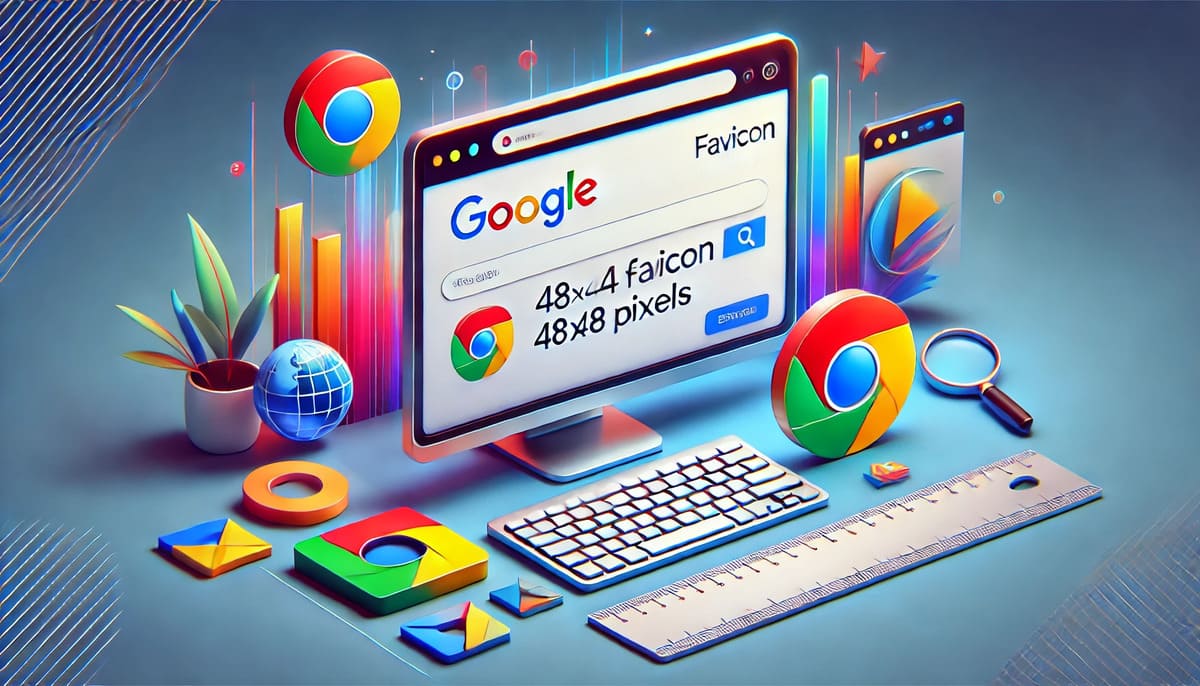
Google now recommends using higher-resolution favicons to improve visibility in search results. Learn the ideal favicon size for Google, how to optimize your icon, and the best practices for updating your favicon across browsers.
How to Update Your Favicon for Google: Best Practices for High-Resolution Icons
30-Second Summary:
Google has updated its guidelines, recommending a 48×48 pixel minimum size for favicons in search results. This change helps improve the clarity of website icons, especially on high-resolution displays. Learn how to update your favicon according to Google’s latest best practices and enhance your brand’s visibility in search results.
The Complete Guide to Google High-Resolution Favicon: Best Practices and Size Recommendations for 2024
Favicons are a small yet powerful branding element that appears in browser tabs, bookmarks, and now even in Google search results. Recently, Google updated its guidelines, recommending a larger, higher-resolution favicon to improve the user experience. This update is especially crucial for websites looking to enhance their visibility and maintain a professional appearance across various devices. In this guide, we’ll explore everything you need to know about Google’s new favicon recommendations, including the best size, optimization tips, and implementation strategies.
Imagine your website’s icon standing out clearly in Google search results, making your brand instantly recognizable. With Google’s new guidelines for high-resolution favicons, you can achieve just that. A crisp, clear favicon can make a subtle yet significant impact on your site’s branding and user experience. Let’s explore how to make the most of this update and ensure your favicon meets the latest standards.
- What is a Favicon and Why Does It Matter?
A favicon is a small icon that represents your website and appears in browser tabs, bookmarks, and search results. It serves as a visual representation of your brand and can influence how users perceive your site in search results. - Google’s New Favicon Guidelines for 2024
Google now recommends using favicons that are at least 48×48 pixels in size. This update from the previous 16×16 pixel standard aims to improve the appearance of favicons on high-definition screens, ensuring they remain clear and legible. - Ideal Favicon Size for Google Search
- Recommended Size: 48×48 pixels minimum.
- Maximum Size: While there is no strict maximum, keeping the favicon proportional and consistent across different sizes ensures better display across devices.
- File Format: Use PNG for better quality or SVG for scalable designs.
- How to Update Your Favicon for Google
- Create a High-Resolution Favicon: Use design tools like Canva or Favicon generators to create a 48×48 pixel favicon.
- Upload the Favicon: Update the favicon file in your website’s root directory and update the HTML code to reflect the new favicon.
- Test Across Browsers: Ensure your favicon displays properly on Chrome, Firefox, Safari, and Edge.
- Best Practices for Favicon Design
- Keep It Simple: A simple design ensures that your favicon is recognizable even at smaller sizes.
- Maintain Brand Consistency: Use colors, symbols, or logos that align with your brand identity.
- Optimize for Different Backgrounds: Ensure your favicon looks good on both light and dark backgrounds.
- Impact of High-Resolution Favicons on SEO
While favicons themselves don’t directly impact search rankings, they play a role in brand visibility and user experience. A clear, high-quality favicon can make your website appear more professional in search results, potentially leading to higher click-through rates. - Common Favicon Mistakes to Avoid
- Low-Resolution Icons: Using outdated, low-resolution icons can make your website look less polished.
- Not Testing for Visibility: Ensure your favicon looks sharp on all devices and screen resolutions.
- Ignoring File Size: While resolution matters, ensure your favicon file size is optimized for fast loading.
Updating your favicon according to Google’s new guidelines is a simple yet effective way to enhance your website’s presentation in search results. By adopting a high-resolution favicon, you can improve your brand’s visibility and ensure a professional appearance across all devices. Take the time to design a quality favicon that represents your brand, and keep your website ahead of the curve with Google’s latest recommendations.
Google’s updated guidelines recommend using a 48×48 pixel favicon for better visibility in search results. This guide explains how to create and optimize a high-resolution favicon to meet Google’s new standards, ensuring your website stands out in search.
Takeaway:
A high-resolution favicon is more than just an icon—it’s a key element of your website’s branding in Google search results. By following Google’s updated recommendations, you can ensure your favicon looks great across all devices, enhancing your site’s user experience and visibility.